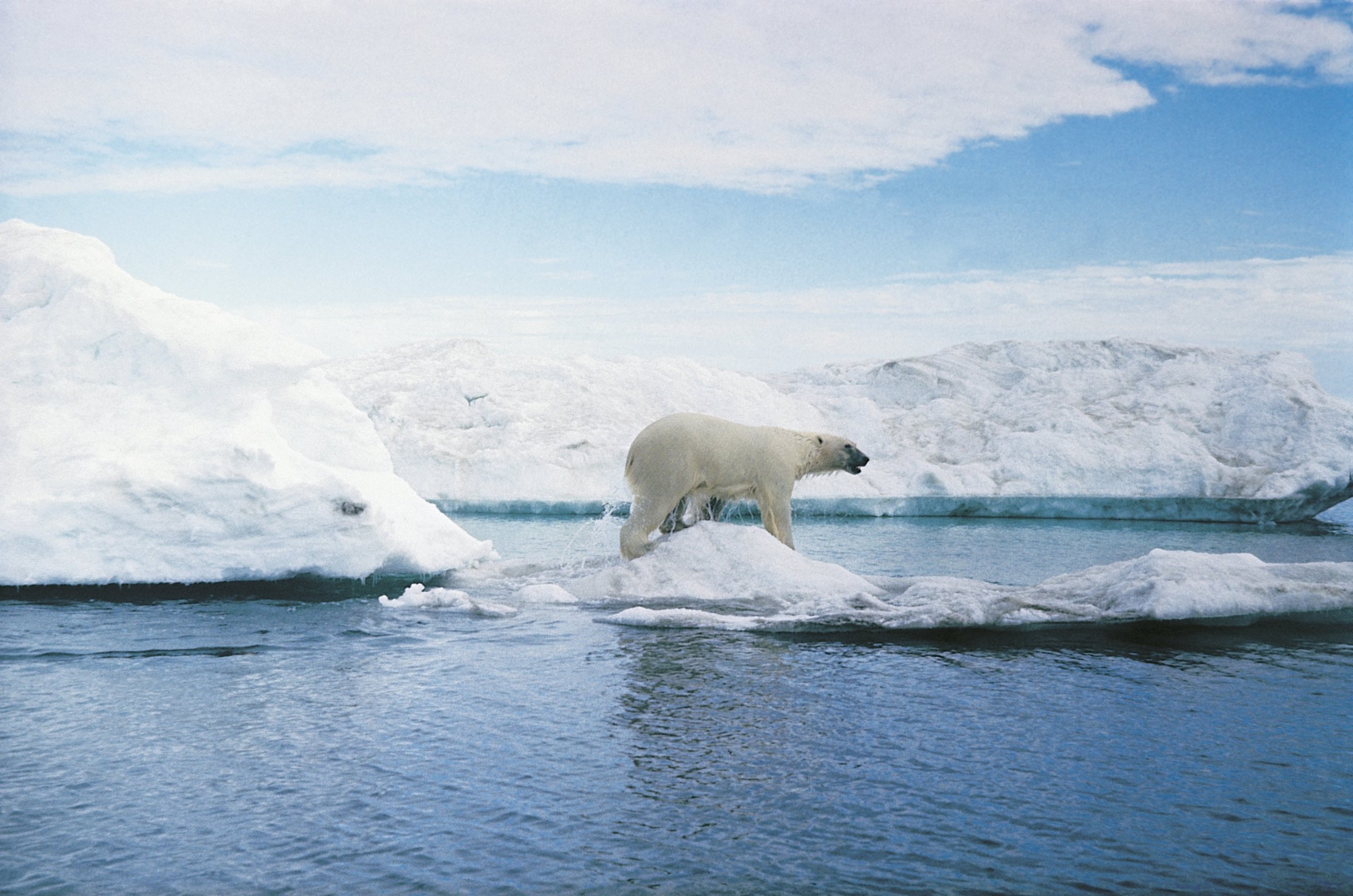
The Arctic ice sheet has shrunk so much that National Geographic is having to make what it calls “drastic” changes to its atlas.
Geographers say the disappearing ice is “one of the most striking” changes in the history of the National Geographic Atlas of the World, which will release its 10th edition in September.
The phenomenon was described by National Geographic geographer Juan José Valdés as “the biggest visible change other than the breakup of the USSR.”
Valdés and cartographer Rosemary Wardley used data from NASA’s 30-year study of layered ice to show the drastic changes caused by global warming and emphasize the vulnerability of Arctic ice to climate change.
National Geographic explains that as the ice thins through melting, sunlight is able to penetrate remaining ice more easily and warm up the ocean underneath, which in turn makes the ice melt even faster. Small ponds of melted water — which absorb sunlight — also collect on the surface of the ice and further contribute to the reduction.
Valdés thinks that the atlas could help people see the effects of global warming in a tangible way. “Until you have a hard-copy map in your hand, the message doesn’t really hit home,” he said.
[NatGeo]
More Must-Reads From TIME
- The 100 Most Influential People of 2024
- Coco Gauff Is Playing for Herself Now
- Scenes From Pro-Palestinian Encampments Across U.S. Universities
- 6 Compliments That Land Every Time
- If You're Dating Right Now , You're Brave: Column
- The AI That Could Heal a Divided Internet
- Fallout Is a Brilliant Model for the Future of Video Game Adaptations
- Want Weekly Recs on What to Watch, Read, and More? Sign Up for Worth Your Time
Contact us at letters@time.com